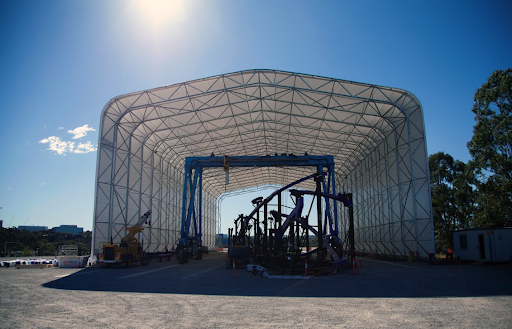As the world continues to face the challenges of climate change and sustainability, there is an increasing need for environmentally friendly building solutions. Fabric shelters are a sustainable and eco-friendly alternative to traditional steel-clad buildings.
For example, Allshelter’s shelters are designed to be energy-efficient and easy to install, making them a cost-effective and eco-friendly option for businesses looking for a sustainable building solution.
Let’s delve right in and discuss the environmental benefits of fabric shelters and why they are a wise choice for businesses looking to reduce their carbon footprint.
Reduced Carbon Footprint
One of fabric shelters’ most significant environmental benefits is their reduced carbon footprint. Unlike traditional steel-clad building materials, fabric shelters are tight-packed, meaning multiple shelters can be transported simultaneously, reducing carbon emissions.
The compactable nature of the materials used in fabric shelters, allowing them to be transported in kit form, means that they require fewer resources to transport to their final destination. This outputs lower carbon emissions and a more sustainable building solution.
Energy Efficiency
Another environmental benefit of fabric shelters is their energy efficiency. The white Straatex®️ High-Density Polyethylene Fabric used in container shelters is designed to reflect heat, keeping the shelter’s interior cool in hot weather. This means that fabric shelters require less energy to maintain a comfortable temperature.
In addition, the white translucent fabric allows for natural light to enter the shelter, reducing the need for artificial lighting during the daytime. Natural lighting reduces energy consumption and creates a more comfortable and inviting atmosphere for workers.
Recycling and Repurposing
Fabric shelters also offer the potential for recycling or repurposing materials. When a fabric shelter has reached the end of its useful life, the materials can be recycled or repurposed for other projects.
This minimises waste and extends the materials’ life, further reducing fabric shelters’ environmental impact. Additionally, the modular design of fabric shelters allows for easy disassembly and relocation.
This means that the shelter can be moved to a new location if needed, reducing the need for new materials and reducing waste. This modular design also allows for easy customization and expansion of the shelter, further extending its useful life.
A Sustainable Building Solution

Allshelter is a company that specialises in fabric shelters and provides a sustainable shelter solution for businesses across a wide range of industries. Their shelters are designed to be durable, energy-efficient, and easy to install, making them a cost-effective and eco-friendly option for businesses looking for sustainable building solutions.
Fabric shelters are also designed to withstand extreme weather changes, making them ideal for use in areas prone to severe weather events. These shelters can be used for various applications, including warehouse storage, equipment storage, tire-changing bays, and shelter for workshops.
Their shelters can be customised to meet the specific needs of a business, including size, foundations, timeframe, accessories, and shelter openings. This means companies can have a sustainable building solution that meets their unique requirements.
Fabric shelters are also designed to be trouble-free to install, reducing the need for heavy equipment and skilled labour. This means that the installation process has a lower environmental impact than traditional building methods, which often require heavy equipment and significant energy.
Case Study
Many businesses have already seen fabric shelters’ environmental benefits and chosen to use them for their operations. One such business is a mining company in Australia that needed a shelter to protect its heavy machinery.
The company chose a fabric shelter from Allshelter, customised to meet their needs. The fabric shelter protected their machinery from weather damage and reduced the company’s carbon footprint by requiring minimum energy to produce and transport than traditional building materials.
Conclusion
Fabric shelters offer a sustainable and eco-friendly building solution for businesses across various industries. The environmental benefits of fabric shelters include a reduced carbon footprint, energy efficiency, and the potential for recycling or repurposing materials.
Companies can minimise their effect on the environment by choosing a fabric shelter and lowering their operating costs. As the world continues to face the challenges of climate change and sustainability, fabric shelters offer a wise choice for businesses looking to reduce their carbon footprint and create a more durable and sustainable future.







